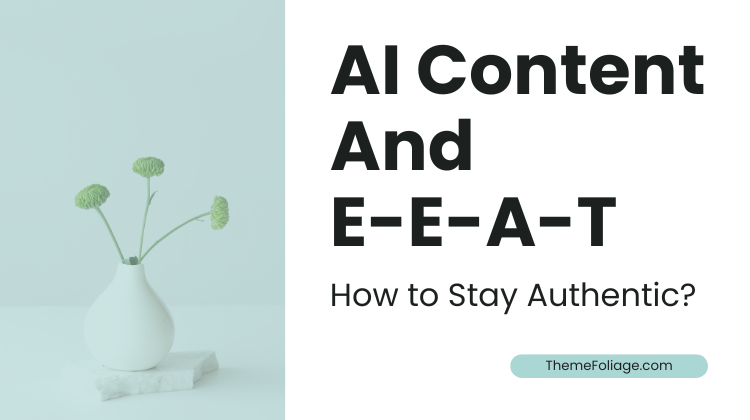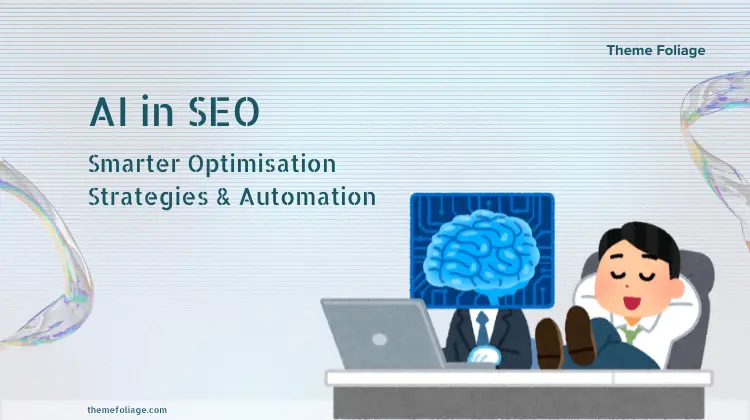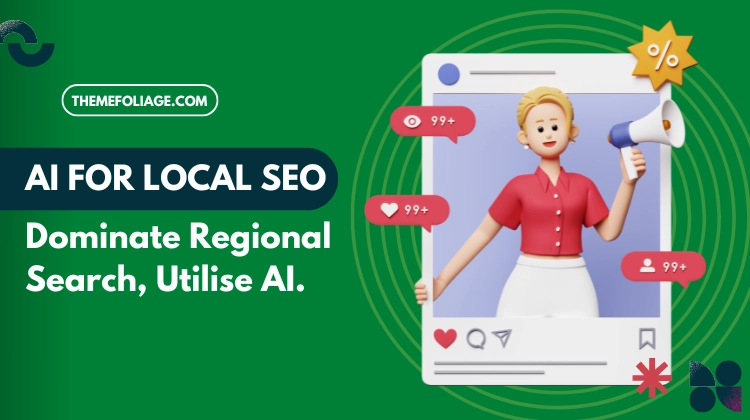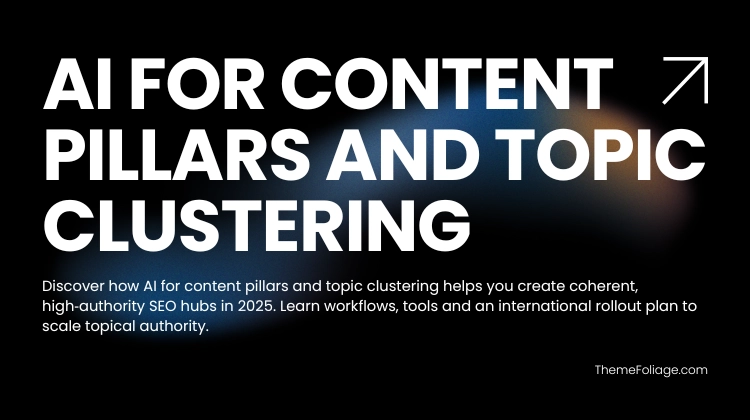AI-generated content has transformed digital marketing. In 2025, businesses are producing articles, product descriptions, and even full websites using artificial intelligence.
However, with Google’s focus on E-E-A-T (Experience, Expertise, Authoritativeness, and Trustworthiness), the challenge is clear: how do you create AI content that feels authentic and still performs well in search?
1. Understanding Google’s E-E-A-T principles
Google evaluates content based on the E-E-A-T framework:
- Experience: Has the author personally experienced the topic?
- Expertise: Does the content demonstrate knowledge and accuracy?
- Authoritativeness: Is the website a recognised source in its field?
- Trustworthiness: Can readers and search engines rely on the information provided?
AI tools can accelerate writing, but they can’t inherently show experience or authority. That’s where human involvement becomes vital.
2. The rise of AI content in SEO
AI writing tools have matured dramatically. Platforms like ChatGPT, Jasper, and Writesonic produce high-quality drafts in seconds. In 2025, even Google acknowledges that AI-assisted content isn’t against guidelines, provided it meets quality standards and demonstrates E-E-A-T principles.
“Automation or AI isn’t inherently bad. It’s about the quality of what’s produced.” — Google Search Central
3. Common pitfalls of AI-generated content
While efficient, AI content carries certain risks that can undermine SEO performance if left unchecked:
- Generic or repetitive phrasing.
- Inaccurate or outdated information.
- Lack of unique insights or real-world experience.
- Absence of human tone and contextual depth.
These issues can erode trust, reducing engagement and visibility.
4. Combining AI efficiency with human authenticity
The best strategy in 2025 is human-in-the-loop content creation. This hybrid approach combines AI’s productivity with human judgement, experience, and voice.
- Use AI for brainstorming, outlines, and drafts.
- Rely on human editors for fact-checking, tone adjustments, and personalisation.
- Add real-life examples, case studies, and first-hand experience.
5. Showcasing experience in your content
One of the biggest differentiators in the E-E-A-T era is lived experience. Even AI-assisted articles should reflect practical insights.
- Include anecdotes or personal takeaways from real-world projects.
- Reference actual clients, campaigns, or case studies (where appropriate).
- Use quotes from team members or verified professionals.
6. Build author credibility
Google’s Quality Raters look for identifiable authors with verifiable expertise. Ensure every article has a real author profile linked to credentials and online presence.
- Add author bios with qualifications or experience in the topic area.
- Link to social profiles or portfolio pages.
- Use schema markup for author and organisation information.
7. Maintain factual accuracy
AI models can sometimes generate plausible but incorrect information. Human verification is essential for maintaining trust and authority.
- Cross-check every fact, statistic, or quote with credible sources.
- Update references to the latest year or dataset.
- Avoid speculative or unverified claims.
8. Implement AI disclosure transparently
Transparency is key to trust. If AI contributed to your content, disclose it appropriately.
- Add a statement such as “This article was created with the assistance of AI and reviewed by our editorial team.”
- Be upfront without diminishing the content’s value.
9. Focus on user intent and topical depth
Even with AI, successful SEO content must meet user intent completely. Go beyond keyword stuffing — deliver depth and clarity.
- Cover all angles of the query with structured headings and examples.
- Use semantic keywords naturally within the content.
- Include FAQs to capture long-tail searches.
10. Use structured data for credibility
Structured data helps Google understand the context and authority of your content.
- Use Article, Author, and Review schema where applicable.
- Include publication dates and update timestamps.
- Ensure schema is validated using Google’s Rich Results Test.
11. Avoid over-automation
Relying entirely on AI for publishing can lead to content duplication, factual issues, and loss of tone consistency. Use automation strategically, not excessively.
- Manually review all AI-generated text before publishing.
- Customise introductions and conclusions for human warmth.
- Inject unique brand voice into every piece of content.
12. Keep your content updated
AI-generated content can become outdated quickly if not maintained. Schedule periodic reviews to ensure freshness and accuracy.
- Set quarterly refresh cycles for high-traffic pages.
- Update figures, screenshots, and quotes regularly.
13. Evaluate content performance
Analyse how AI-assisted content performs compared to human-written posts. Use this data to refine your strategy.
- Measure engagement rates, dwell time, and bounce rates.
- Compare conversion performance across content types.
- Track E-E-A-T signals like backlinks, mentions, and author searches.
Conclusion
AI content can be a powerful ally when used responsibly. In 2025, success lies in combining technology with human authenticity.
When you align AI content creation with E-E-A-T principles, you build credibility, trust, and authority — the true cornerstones of sustainable SEO growth.
You should also learn about – Content Refreshing Strategies.



